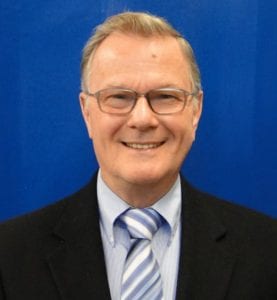
Please tell us how Induction Tooling began.
In 1975, I was working as a process design engineer with a local commercial heat treating company. Several customers were coming to me and requesting tooling specific to their internal heat treating needs. My boss rejected the idea to build tooling, so I set out to begin my own business in 1976, which I started in my parents’ garage. Today, I have a 30,000-square-foot facility in North Royalton, Ohio, with 20 employees.
What products does Induction Tooling offer?
Our team designs and manufactures high-quality tooling for the induction heat treat industry, specializing in selective hardening quick-change inductors for the automotive, aerospace, medical, agricultural, and metal industries. We build high-quality inductors, bus bars, quick-change adapters, and other products. We are also a certified commercial testing laboratory accredited to ISO 17025 by the American Association for Laboratory Accreditation (A2LA) for the services provided by our metallurgical lab.
Describe Induction Tooling’s capabilities.
Our design approach is unique for each and every project in that we closely analyze and continually improve the quality, performance, and durability of our products. We develop and use the latest in computer technology — including FEA computer modeling, CAD/CAM software tools, surface and solid modeling, and 2- through 5-axis CNC machining applications — to validate our inductors. And along with controlled documentation, we can assure repeatable tooling to the closest tolerances in the industry.
In addition to our induction R&D laboratory, our commercial metallurgical laboratory integrates a complete package of testing services for our customers. Our lab manager, Sandra Midea, is a registered professional engineer with over 25 years of heat treating and testing experience. Our modern fully equipped metallurgical lab includes the ability to section and machine larger cross-section parts, including large bearing races and gears.
What sets Induction Tooling apart from others in the industry?
We are recognized worldwide as a premier manufacturer of tooling for induction hardening, commonly called “inductor coils.” We are also the largest facility in the world that engineers this tooling for selective hardening.
No one else offers customers a full-circle process like we do. We engineer the tooling, we build it in our production facility, and we test it in our induction laboratory to specific frequencies that our customer may have, either captive or in a commercial environment.
We are able to take the specification of a part, which is built into the basic structure, and hit the exact median in between the maximum requirement and the minimum requirement of selective hardness required on the component itself. This will allow for the deviation in their process when they do the heat treating. We build the tooling so that it hits that median.
Then, after the testing process, we characterize the tooling so that it is able to qualify. Once the characterization is done, we run parts in our induction lab, section the part, mount samples, and do the metallurgical evaluation. Sandra writes a report and submits it to the customer so that either they do it in-house with their equipment, send it out to a local heat treater, or order the equipment from the generator manufacturer with specifications to their part using our qualified inductors.
What are your biggest challenges related to induction heating?
Our biggest challenge is with training new people entering our industry and quickly teaching the process of induction heat treating as it applies to selective hardening. Selective hardening is often applied to areas that will be case hardened by the induction heating method. The entire part itself is not heated, which makes it a green energy process. It takes a lot of training to understand how to apply the application, and it takes a lot of experience. There are safety issues, too, because it’s an electrical process and we are working with high electrical currents at high frequency.
Training at our facility involves hands-on instruction utilizing the machine controls, understanding the concept of load tuning, capacitance, and the relationship of LC circuits (inductive capacitive circuits). Training also includes learning about the generator supplying power to the load tuning circuit and the inductor. The result shows how the heated part reacts to the inductor. Our team offers training programs at our facility and in our laboratory. When trainees move on to the factory environment where they are heating a part using the induction process, they need to feel prepared and comfortable.
What benefits do you offer to customers?
In addition to the design and fabrication of world-class tooling, we provide inductors that are capable of producing the required induction hardening pattern immediately when put into production. We also provide ISO-compliant commercial test lab reports that validate the results for our customers. The benefit is significantly reduced time to get a new process into production or ready to PPAP while using fewer company resources. We also use the induction development lab to solve problems, do research and development, and to invent new or novel methods for selective hardening. Our met lab also provides commercial testing services specially geared toward induction heat treating evaluations.
























